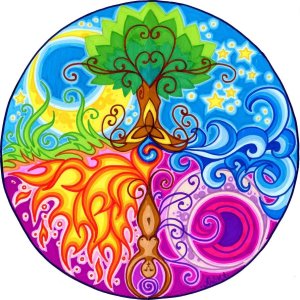Model | Erica
MUA/Photographer | https://www.facebook.com/StilettoesRoseMakeUpandPhotography
~~~~~~~~~~~~~~~~~~~~~~
- Think of someone who is always sharing grandiose plans and nothing can ever dampen his hopes.
- Now, think of someone else who is always making comments like ‘get real’, ‘be realistic.’
- Lastly, think of another person who seems to be always finding fault with people or issues.
- Which one do you identity with the most? The first? Second? Or the third?
The good news is that we are all of these, just varying in degrees. And we can use these different sides of ourselves to our advantage. Really! 🙂
When the dreamer, the realist and the critic come together in a structured manner, creative ideas can be transformed into reality, provided that they are given the space to be investigated freely and separately. This process is called the Walt Disney Creative Strategy. Robert Dilts adopted the model and developed it into a NLP technique.
The Dreamer
This is the person who believes all things are possible. He can dream up the most incredulous dreams and have enormous faith that it can be done.
‘Deep into that darkness peering, long I stood there, wondering, fearing, doubting, dreaming dreams no mortal ever dared to dream before.’
– Edgar Allan Poe
The Realist
The realist is the one who explores all the options given by the dreamer and decided on the more probable choice. Then he/she will do the necessary research and apply a course of action.
‘I’m a realist, not a sugar coater. I believe in always letting people know what their obstacles are. And at the end of the day, I just want to be respected for my hard work.’
– Tichina Arnold
The Critic
The critic is the one who plays the Devil’s advocate. He/she will point at the areas that needs to be worked on. As negative as it sounds, the critic is an equally important part to the whole creative process. He/she can be a very useful checklist to troubleshoot potential areas before challenges arises.
“I am my own biggest critic. Before anyone else has criticized me, I have already criticized myself.”
– C.Joybell C
*** Note: It is important that the different aspects are strictly doing only what they are supposed to do so there is clear distinction and delegation of tasks. Ensure that there is no overlapping. Imagine asking the critic in you to be the dreamer, it will not be effective.
Checklist
- Are you too stuck in one of these roles in your life? Consider varying the different sides of you.
- What would be a likely statement your family members or close friends will say about you?
- ‘He has got his head in the clouds.’
- ‘She’s an ideas person.’
- ‘He is only interested after he sees the plan of action.’
- ‘She is good at the nuts and bolts.’
- ‘All he does is bring me down.’
- ‘She always have a reason why it cannot be done.’
How can I use this strategy?
You can do this by yourself (which might be challenging for some) or you can do this with two other friends/colleagues.
- Pick the issue/challenge.
- If you are doing this with others, ensure that everyone is very clear of their roles. Not one should be allowed to speak until the one speaking has made all his/her points.
- The dreamer has to focus on all the possibilities to achieve/resolve the issue. No judgements. The realist has to analyze which possibilities should be looked into based on their strengths and weaknesses. The critic has to scrutinize what could possibly go wrong.
- If this is meant to be an experimental/creative exercise, get everyone to switch roles until all have a chance at experiencing the three roles. If you are doing this on your own, you can take turns to play the three sides. Pace yourself. Take a short break if necessary before you play the next role so that you can mentally disconnect with your current role and prepare yourself for the next role.
I know this might sounds a little tedious but I believe that with practice, you can do this quickly in the future and with that, enhance your future outcomes. Also you might be more emphatic in your interactions with others who might be leaning more towards a particular role. Because you have been enlightened! 🙂
More insights on Walt Disney Creative Strategy here.
~~~~~~~~~~~~~~~~~~~~~~
Thanks for reading.
P.S. Have you downloaded my free life coaching app for you?
Please rate it if you can. Much thanks.
ON your Joylight! 🙂
~~~~~~~~~~~~~~~~~
- Need someone to talk to?
- Seek clarity to your thoughts?
- Refocus on your life goals?
- Or to resolve a challenging issue in your life?
Contact me for a free 30 minutes session.
You are not alone.
The sky is only the beginning.
For more information on my background
For Our Children (FOC) initiative



